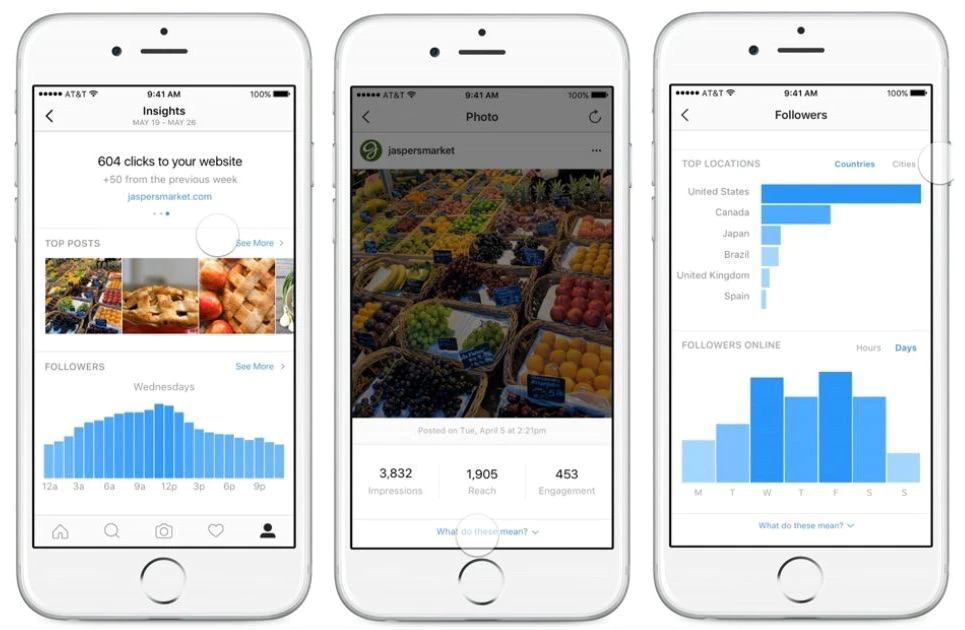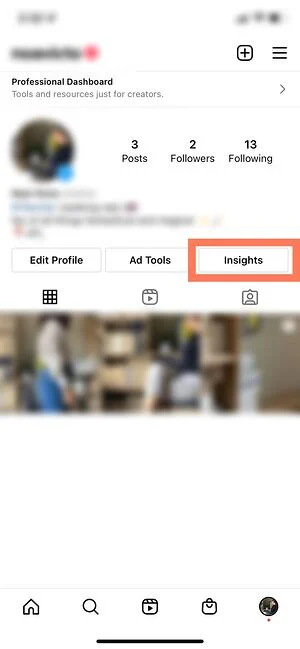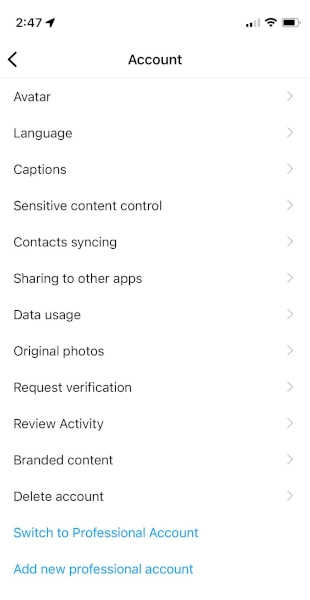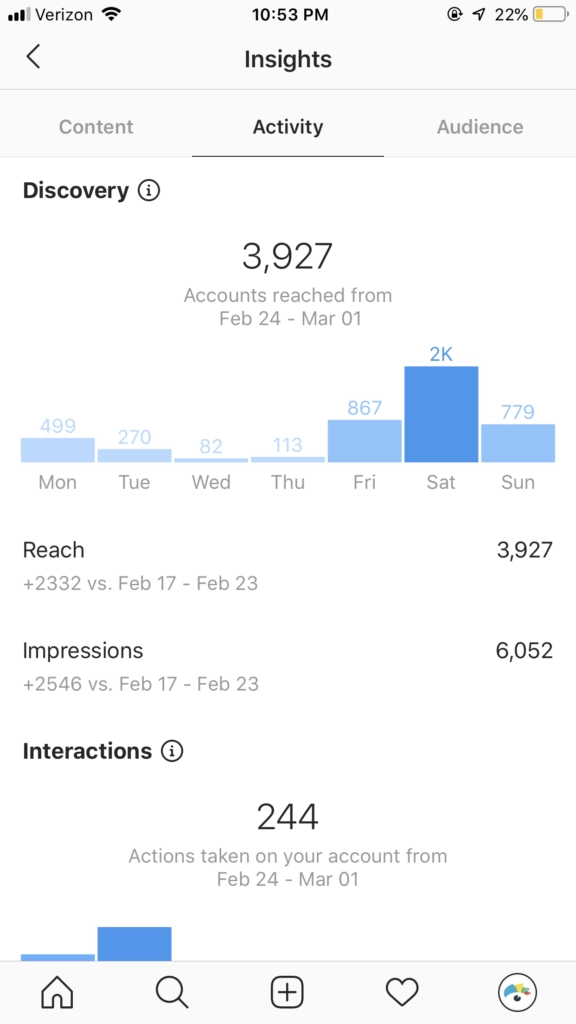Reading Time: 18 Minutes
There are four main ways to create video content on Instagram. But how do you track video performance for each?
Thankfully, Instagram offers its own free analytics platform for professional accounts. If you’re unfamiliar with Instagram’s video analytics tools, you’ve come to the right place.

Analytics in Instagram are called Insights.
The Insights feature is currently only available for Business and Creator accounts. If you’ve not yet converted your profile to a professional account, we’ve included step-by-step instructions below.
To access your video analytics, you will select the “Insights” button located on your profile. Note: only you can see your own Insights.

After loading your Insights page, you can view metrics over the last 7 or 30 days.
There are many great videos and how-to blogs on improving your Instagram reporting. A couple great places to start are Help.Instagram.com and Facebook Business (since Facebook manages Instagram).
If you’re someone that will spend a lot of time managing your brand’s IG account, you might consider bookmarking the following pages for future reference:
Discovery metrics show your video exposure. Instagram tracks your discovery metrics using Reach and Impressions.
Your video reach is the number of people who saw your video, and impressions occur each time someone watches your video.
For some of your video posts, Instagram Insights can tell you where your Discovery metrics came from. For example, Insights can tell you impressions achieved by using certain tags and hashtags in a Story.
Reels are your collection of short-form videos on Instagram. The platform tracks the number of times that someone started watching your video but does not record replayed videos. Here are the Reels metrics to know:
Reels metrics are public, so it is not necessary to view these numbers in Insights.
When you want to launch a Live virtual event, the key metrics to track are:
Keep in mind that these metrics are also public during your broadcast. Which means, you will not need to navigate to Insights to view these Live performance metrics.
That being said, archived Live broadcasts are not public. If you want to make an IG Live event public after the event is over, then you can add it to your IGTV collection.
Unfortunately, Instagram does not retain Live performance metrics once you’ve archived the video or added it to your IGTV. However, you can view IGTV key metrics on that video from the day that you uploaded the video to IGTV.
Instagram Story Videos are ephemeral, meaning that they disappear after 24 hours from the time you posted. If you want a Story to stay up longer than a day, you can add it to your profile Highlights.
In general, you’re more likely to see higher-quality metrics by adding tags, stickers, and features to your Story video. That said, you’ll need to find a balance between clickable features and design to reduce clutter and attract audiences.
Here are the top IG Story metrics that you’ll want to become familiar with:
Anyone may upgrade their personal account to a professional account for free. When converting your profile, you can either choose to be a Creator or a Business.

From your profile page, navigate to the “hamburger” menu icon and select Settings at the top of the list.

Scroll to the bottom of the menu and select “Switch to Professional Account” highlighted in blue.

Depending on whether you’re a business or creator, Instagram will have a few things for you to do to complete your profile, along with some pointers to set you up for success.

When you first launch your professional page, there won’t be any metrics to track in Insights. But as you grow your followers and content, you’ll be able to access video analytics data here. You will also have the option to promote certain video posts to increase your reach.
Armed with Insights, you’ll now be able to track your video performance on Instagram. As you become familiar with these analytics tools, here are a few things to know.
With a few exceptions, Instagram does not allow you to see who viewed your videos. In fact, there are no known reliable third-party apps that are authorized to fetch that data.
Many Instagram users are eager to see who is watching their videos. Some third-party apps that advertise this analytics feature can leave tiy open to security issues.
That said, you can see who’s viewed your IG Stories along with who’s joined your IG Live event. But once these temporary posts end, so does the profile-specific viewer data.
Your discovery metrics are your combined reach and impressions. Your reach refers to how many people saw that you posted a video, and impressions tell you who watched your video for any length of time.
Insights will also show you how long your audience viewed your long-form video content (IGTV).
When calculating your reach for your videos, you can look at your total reach (the number of people who saw that you posted) and compare that number to your follower count or video impressions (views).
To calculate your reach, consider using the following approaches:
What you want is for your reach to be bigger than your follower count, which means that that non-followers are discovering your content as more users share your video. A high reach also indicates that you are using tags and hashtags well, and as a result, Instagram algorithms are pushing your videos into more feeds.
Additionally, comparing your views to your reach shows you the percentage of people who watch your video once it enters their feed. A low view-to-reach ratio might mean that the beginning of your video (cover image) isn’t drawing enough attention to your content.
Any interaction with your video counts as an engagement. The most valuable engagements are comments and shares. For IG Stories, you can add features and filters to increase custom interactions that also count as high-quality engagements.
While likes are less valuable than comments and shares, your like count can be a strong indicator for how receptive people are to your video content.
When calculating an engagement rate for a video, you can do so in one of three ways:
How you measure your engagement rate is up to you and your social media team. Whatever route you take, it’s important that you use the best metric to develop a deeper connection with your audience. Engagement remains one of the best ways to measure your brand’s social influence.
Unlike for image posts, it is difficult to track website clicks from IG videos, unless your account uses Swipe-ups in your Story content.
While you can’t measure website clicks, you can add UTM codes for free in Google Analytics for your Instagram video posts. These tags will catch all web traffic that originated from a Live event, Reel, or IGTV impression.
Insights allows you to see overview metrics, audience insights, and more detailed data on what time of day people viewed your videos. Each dashboard section offers an arrow to dive deeper into your analytics.
If you’re serious about your video analytics, you’ll want to export Insights data into a spreadsheet to track beyond the 7 or 30-day window.
Guides is a new feature in Instagram that allows you to create a listicle blog or collection of your favorite posts (video or image), places, or products. Currently, there is no way to track your video performance within a Guide, but those analytics may be available soon.
Knowing where to find “the numbers” for your Instagram video performance is the first step to creating a strategy that will resonate with your audience.
Before you go any further, it’s a good idea to step back and take stock of your overall marketing goals. Your video performance on Instagram is just a piece of the bigger marketing cake.
It’s likely that you are running video posts on multiple platforms in social. Your IG video tactics should align to those goals, as well. Take a moment to examine all your video posts against the backdrop of your marketing strategy.
If you work with influencers, ambassadors, or customer advocates, then that means you have a decent repository of UGC to choose from when creating your videos. Any marketing goals that impact your influencer strategy should be clear to your influencer marketing team.
If you’ve only recently launched your professional account on Instagram, it could take a few days for all the insights to show up on your dashboard. Once they do, you’ll be able to see how your content is performing.
Instagram does a great job of showing you audience and time-of-day metrics. It will also catch all interactions and reach. Allow each of these metrics to show you what kind of video posts perform best.
A common question among social media marketers is, When and how often should I post?
The answer can vary based on your industry and audience, and as such, there’s no one-size-fits-all approach to how often you should post. However, Instagram Insights can help you identify your ideal video post frequency.
The reality is that there is not enough time in the day to create original videos for every post, multiple times a day. Thankfully, Instagram is one of the best places to repurpose content from other platforms. Consider one or more of the following cross-platform techniques:
The best way to create key performance indicators (KPIs) for your IG videos is to match them with metric goals. Initially, your metrics and KPIs should help you establish a baseline for your video performance. After identifying your baseline performance, you can measure progress.
For example, a great KPI might look like this:
Increase my Reels views/impressions by 15% before the end of the month.
When setting KPIs, be sure to answer the following questions:
One of the great things about digital marketing is that it is a process of ongoing improvement. Insights can help you refine your video strategy over time. Your initial performance can be your baseline, and you can experiment with different approaches until you find your ideal approach.
As you may have noticed, Instagram Insights is not yet a robust analytics tool (for example, you can only track post performance over the last 7 or 30 days). If you want to go beyond the basics, you’ll need to add some tools to help you track your IG video performance better.
The manual approach (the best approach for beginners) is to create a spreadsheet and record all critical metrics. You should update this spreadsheet regularly. The more you track, the better you’ll be able to know exactly how to connect with your audience.
Before long, manual tracking will not be sustainable for you and your team. This is especially true if you manage influencers and user-generated content online.
Once you’ve hit your capacity for manual tracking, it will be time to examine social media automation tools. Many of these tools will provide more in-depth, long-term analytics for your video posts and perform basic social listening tasks.
To find the best social media automation tools, we recommend checking out platforms on G2.com, a peer-to-peer review, and software discovery platform. You can filter your search by software category, top features, and cost.
Posting videos without relevant audience data will make your social media strategy “hit or miss.” Analytics helps you dial in your digital marketing tasks for maximum ROI, particularly when posting videos on Instagram. Even though working with any analytics tool is intimidating at first, you will grow more comfortable with practice.
Are you ready to stake your claim in the creator economy? Discover more helpful tips and resources from the experts at GRIN: Creator Management Learning Center
Our team keeps a finger on the pulse, so you’re always working with the latest information.